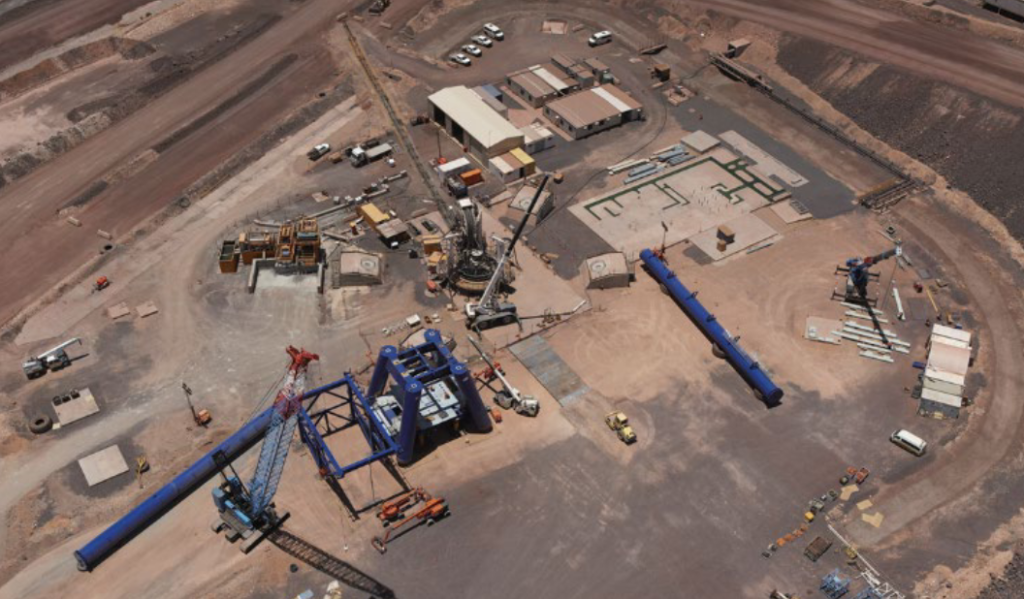With the shareholder vote on BHP’s proposed acquisition of copper and gold mining group OZ Minerals expected to be held in early April 2023, and with OZ Minerals Directors unanimously recommending shareholders vote in favour, it is a good time to review the miner’s progress in 2022 and plans for 2023 across its main mining operations and projects, as outlined in its just released Q4 2022 report.
Starting with Prominent Hill, OZ Minerals has progressed construction of the Wira Shaft mine expansion with the shaft pre-sink completed in December. Resources were redirected during the year to production over development to counter the impacts of the challenging first half, which will now see the production ramp up from the shaft move from the first half of 2025 to the second half of 2025. The expansion project will further extend Prominent Hill’s life of mine and during the year project optimisation work led to increasing the shaft’s capacity from 6 Mt/y to 6.5 Mt/y. The increased capacity will provide optionality to increase annual production rates.
The shaft pre-sink completion saw equipment removed and the installation of the concrete plug at the bottom of the pre-sink shaft in preparation for the stage 1 raise-bore to a depth of 650 m. The headframe sheave deck preassembly and auxiliary crane structure was completed along with the fitout of the ladderway to the southeast leg. Timely progress has been made on the surface and underground HV cable reticulation. Work on the permanent refrigeration works advanced with the supply and installation of the switch room and erection of the compressor shed. The civil works for the underground vent fans were completed and the steelwork for the overhead crane structure progressed.
At Carrapateena in December, the block cave propagation program continued, involving hydrofracturing, resulting in significant vertical cave growth of 90 m with the cave ultimately breaking through to surface at the end of December, as previously reported in IM. Cave breakthrough significantly reduces the air blast risk underground and is a major milestone for Carrapateena.
Now that the cave has broken through to the surface, mine planning can be optimised for production rather than prioritising the development of the cave through to surface, which has been the primary focus over the first two years of the mine’s life. The underground Block Cave decline development has continued to advance with the decline now over 1 km vertically below the surface. Crusher 2, which will enable increased operational and cost efficiencies for the Sub Level Cave, is now expected to be commissioned in Q4 2023 as flagged in the Q3 production report. Crusher station 2 excavation has progressed and pilot drilling was completed for two of the ore passes which will feed the crusher. Fit out of the three transfer chambers to support Crusher 2 continued to progress. Production commenced from the eighth Sub Level Cave level during the quarter.
Also at Carrapateena, Stage 2 TSF works are complete, with embankment lining finalised and tailings delivery line and spigots complete. Preparation is under way to commence the Stage 2 deposition of tailings in Q1 2023. Substantial progress was made in Q4 on the Material Handling System with transfer station (TCH-003 and TCH-004) installation completed. The main Switch rooms for the MHS system (SWR-5200 & SWR5300) were also installed underground.
Construction in the quarter commenced on the West Musgrave Project following a positive Final Investment Decision and demonstrated the technical and potential commercial opportunity of producing a high quality and high-grade Mixed Hydroxide Precipitate product for feed into the battery industry. OZ Minerals says: “The West Musgrave Project represents the modern miner we aspire to be, with its renewable credentials and innovative ways of rethinking how we do mining.” The final investment approval for the project assumed that the Living Hub modern accommodation and lifestyle facilities were to be delivered, owned and operated by a third-party provider. After further engagement with potential suppliers during the December quarter, the Living Hub is now expected to be delivered under a design and construct model requiring ~A$110 million capital funding, to be initially sourced from project contingency, which will be reassessed as the project progresses, with the potential to increase contingency up to the amount of the Living Hub if required in future. The change in contracting strategy will result in a reduction to operating costs for the project of circa A$170 million over 10 years.











